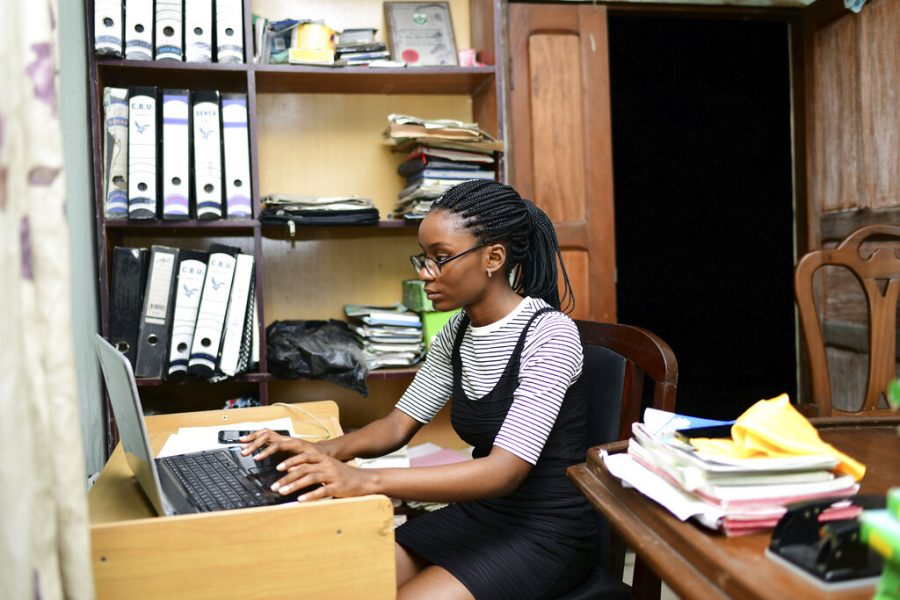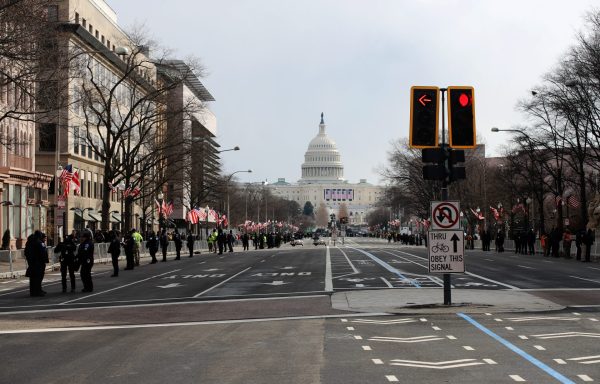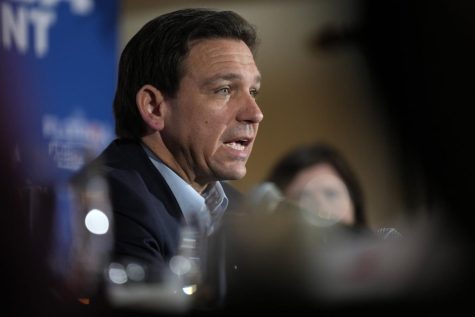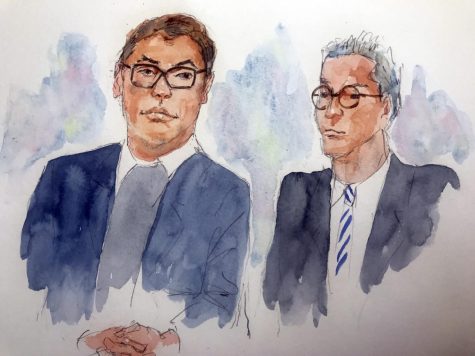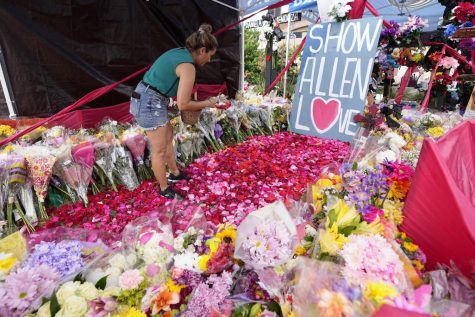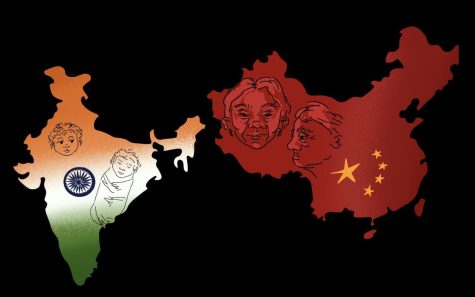Foreign students show less zeal for US since Trump took over
In this photo taken on Tuesday, Oct. 13, 2020, Dodeye Ewa, 16 year old study at the family library in Calabar, Nigeria. The third child is bothered by President Donald Trump’s rhetoric and his policies toward international students, most recently one announced Friday that limits their stays in the U.S. to two or four years with uncertainty about whether their visas will be extended. (AP Photo/Daniel H Williams )
CHICAGO (AP) — On a recruiting trip to India’s tech hub of Bangalore, Alan Cramb, the president of a reputable Chicago university, answered questions not just about dorms or tuition but also American work visas.
The session with parents fell in the chaotic first months of Donald Trump’s presidency. After an inaugural address proclaiming “America first,” two travel bans, a suspended refugee program and hints at restricting skilled worker visas widely used by Indians, parents doubted their children’s futures in the U.S.
“Nothing is happening here that isn’t being watched or interpreted around the world,” said Cramb, who leads the Illinois Institute of Technology, where international scholars have been half the student body.
America was considered the premier destination for international students, with the promise of top-notch universities and unrivaled job opportunities. Yet, 2016 marked the start of a steep decline of new enrollees, something expected to continue with fresh rules limiting student visas, competition from other countries and a haphazard coronavirus response. The effect on the workforce will be considerable, experts predict, no matter the outcome of November’s election.
Trump has arguably changed the immigration system more than any U.S. president, thrilling supporters with a nationalist message and infuriating critics who call the approach to his signature issue insular, xenophobic and even racist. Before the election, The Associated Press is examining some of his immigration policies, including restrictions on international students.
For colleges that fear dwindling tuition and companies that worry about losing talent, the broader impact is harder to quantify: America seemingly losing its luster on a global stage.
“It’s not as attractive as it once was,” said Dodeye Ewa, who’s finishing high school in Calabar, Nigeria.
Unlike two older siblings who left for U.S. schools, the aspiring pediatrician is focused on Canada. In America, she fears bullying for being an international student and a Black woman.
Trump senior adviser Stephen Miller predicted that after a COVID-19 vaccine, an improving economy would draw talent.
“Our superior economic position is going to mean that the world’s most talented doctors, scientists, technicians, engineers, etc., will all be thinking of the United States as their first country of destination,” Miller told the AP.
Roughly 5.3 million students study outside their home countries, a number that’s more than doubled since 2001. But the U.S. share dropped from 28% in 2001 to 21% last year, according to the Association of International Educators, or NAFSA.
New international students in America have declined for three straight years: a 3% drop in the 2016 school year — the first in about a decade — followed by 7% and 1% dips, according to the Institute of International Education, which releases an annual November report. The National Student Clearinghouse Research Center’s fall snapshot shows a 13.7% drop in undergraduate international students.
The government cites high college costs, but students and school leaders tell another story.
At IIT, a Chicago university known for engineering, computer science and architecture, there was a 25% decline in international students from fall 2016 to fall 2018.
Cramb has noticed a change in tone on campus. More international students want to return home.
The pandemic has only exacerbated things, including a short-lived Trump administration rule requiring international students to leave if their schools held online-only classes. Students panicked, universities protested and lawsuits followed.
The Department of Homeland Security then unveiled draft rules last month imposing fixed student visa terms. Instead of being valid while students are enrolled, visas could be limited to four years, with students from countries including Iran and Syria eligible for two years.
Federal officials say it’s a way to fight fraud and overstaying visas. But colleges call it another barrier.
“Right out of the gate, you had the first travel ban, and that really crystalized for students and scholars what was perceived as rhetoric really would translate into actual policy and create a tremendous amount of uncertainty,” said Rachel Banks, a director at NAFSA. “If I choose to study in the U.S. will I be able to finish?”
There haven’t been many reassurances.
The Trump administration has floated curtailing Optional Practical Training, a popular program allowing international students to work. Roughly 223,000 participated in 2018-19, according to the Institute of International Education.
This month, the administration announced plans to limit H1-B skilled-worker visas, often a path for foreign students. It was pitched as a way to address pandemic-related job losses, following a June order temporarily suspending H1-Bs. It’s prompted a lawsuit.
Democrat Joe Biden has promised to reverse some Trump immigration orders. He’s pitched more skilled-worker visas and giving foreign graduates of U.S. doctoral programs a pathway to citizenship.
Dodeye Ewa’s brother Wofai Ewa, an IIT senior studying mechanical engineering, wants to stay in America but worries about his options. He understands his sister’s doubts.
Trump’s disparaging words on immigrants have irked him, including the tone surrounding a January rule to curb family-based immigration from Nigeria and other countries.
“He made remarks about Nigerian immigrants getting jobs, and that put a weird tension around people who wanted to come here,” he said. “That put us in a bad light.”
Nearly 60% of U.S. colleges reported the social and political environment contributed to the decline of new international students, according a 2019 Institute of International Education survey.
Most colleges in the survey said the difficulty in obtaining U.S. visas was also to blame. Student visas issued under Trump shrunk 42%, from nearly 700,000 in 2015 to under 400,000 last year, according to the State Department.
There are signs of waning interest in America in India, which with China, provides the most international students globally.
In 2018, about 90% of Indians studying abroad chose the U.S., with fewer than 5% in Canada. For the 2021 school year, roughly 77% plan to study in America, and nearly 14% chose Canada. That’s according to a survey by Yocket, a Mumbai-based startup helping roughly 400,000 Indian students plan study abroad.
Yocket co-founder Sumeet Jain said there’s still wide belief America is unmatched for science, technology, engineering and math fields, but students have a backup these days.
Several several nations have made it easier for international students.
Canada allows foreign scholars to count part of their schooling toward a residency requirement for citizenship. The United Kingdom allows them to stay for two years after graduation while seeking work. Over the summer, Australia announced a pathway to citizenship for Hong Kong students.
“They are trying to message certainty and flexibility to their international students, and unfortunately, we are messaging uncertainty and rigidity,” said Sarah Spreitzer, a director at the American Council on Education.
There are major consequences.
International students contributed roughly $41 billion to the American economy in 2018 school year. NAFSA estimated that since 2016, the decline of new international students cost the U.S. nearly $12 billion and at least 65,000 jobs.
In response, college leaders formed the Presidents’ Alliance on Higher Education and Immigration in 2017.
Cramb, the group’s co-chairman, is a Scottish migrant who earned his Ph.D. at the University of Pennsylvania. He became IIT president in 2015.
“The greatest thing to happen to me was coming here,” he said. “What we are doing is taking away a richness to the education experience for everyone.”


